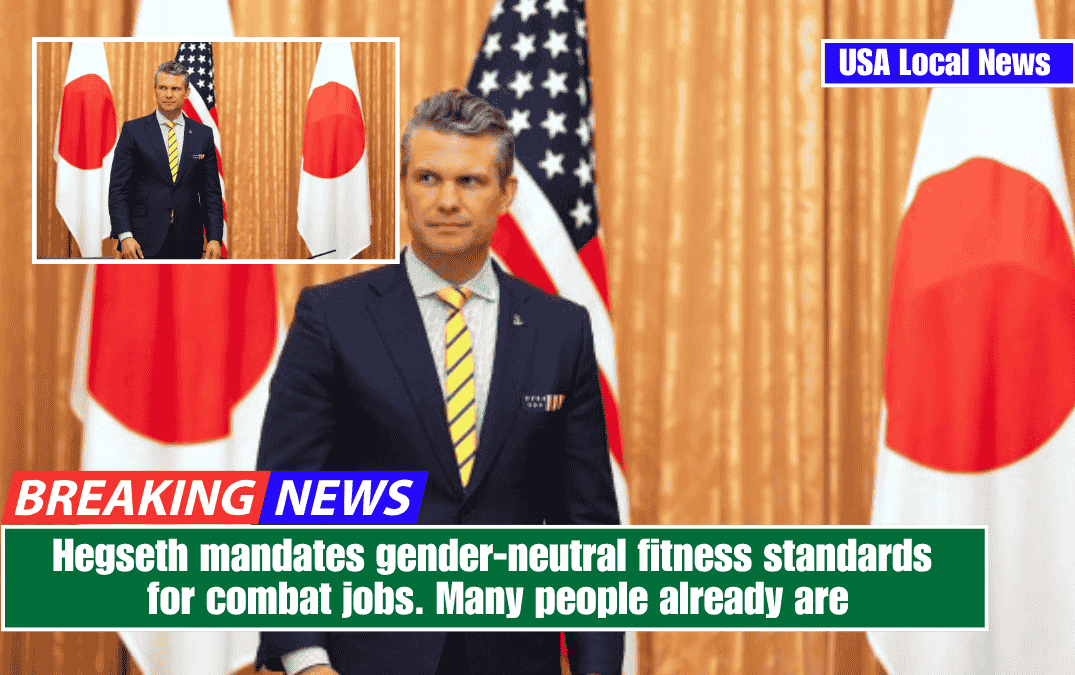Defense Secretary Pete Hegseth has directed the military to create gender-neutral fitness standards for all combat jobs, formalizing a process that already exists for many of those positions.
In a new memo, Hegseth instructed military leaders to distinguish between jobs that are considered combat arms, such as special operations or infantry, and require “heightened entry level and sustained physical fitness” and those that are not.
According to the memo released on Monday, all physical fitness requirements for combat arms positions must be gender neutral, “based solely on the operational demands of the occupation and the readiness needed to confront any adversary.”
The new order expands on a memo Hegseth issued on March 12 stating that the undersecretary for personnel must collect information on military standards “pertaining to physical fitness, body composition, and grooming, which includes but is not limited to beards.”
Both reflect Hegseth’s public criticism of fitness standards long before he took on the Pentagon position. While working as a Fox News commentator, Hegseth expressed his opposition to women in combat roles and his belief that standards had been lowered to accommodate women.
The order, however, may necessitate some complex assessments as all services review their roles and determine which should be considered combat arms. For example, which sailors on a Navy warship deployed to the Middle East and under fire from Houthi rebels should be considered for a combat post?
On smaller ships, it is not uncommon for sailors to perform a variety of tasks, including firing weapons. Should intelligence officers, who were often on the front lines in Iraq and Afghanistan, also be considered combat arms?
The military has long had what is essentially a two-part system for physical fitness standards.
— Annual fitness tests with varying requirements depending on gender and age.
— Tougher standards for specific combat, special operations, infantry, armor, pararescue jumpers, and other jobs that apply to everyone in that occupation and are not adjusted for age or gender.
Hegseth’s memo appears to focus on the second group, arguing that combat jobs necessitate higher fitness standards.
However, specific military jobs such as special operations, infantry, armor, and pararescue already necessitate different, higher-level physical — and often mental and psychological — tests, requirements, and qualification programs.
These standards require everyone to meet the same requirements, regardless of age or gender. For example, an Army soldier who wants to be a Green Beret or a Ranger, or a sailor who wants to be a Navy SEAL, must complete arduous months-long qualification courses.
Furthermore, after the Pentagon permitted women to serve in all combat roles, the Army established specific fitness standards for each military occupation that are the same regardless of age or gender.
Recruits who want to serve in infantry or armor must pass a more rigorous physical assessment before signing a contract for that specialty.
Similarly, Marines require higher fitness standards for their special operations forces and combat jobs.
Hegseth’s memo mentions increased fitness standards for special operations forces, which already exist. It also states that Navy divers and explosive ordnance disposal technicians, who already perform water rescue and demolition, should be required to be proficient in these tasks.
The order allows service leaders 60 days to submit their proposed changes. They have thirty days to submit an interim report.
“As the nature of warfare evolves and the demands on our service members grow more complex, it is imperative that we assess and refine the physical fitness standards that enable our readiness and lethality,” Hegseth wrote in the correspondence.















